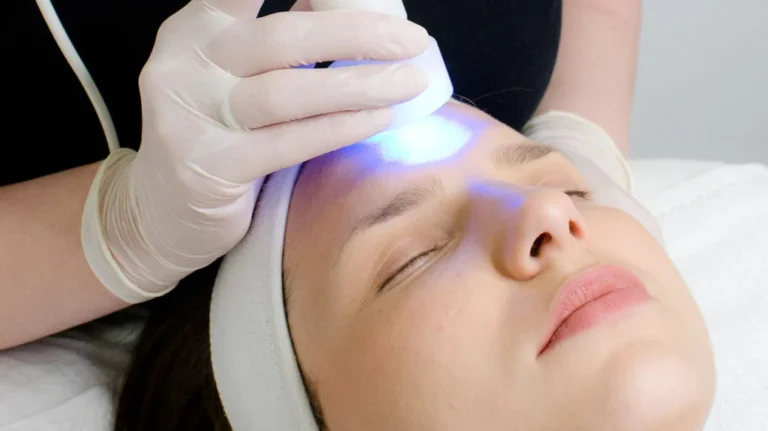LED Light Therapy

What is LED Light Therapy?
LED (light-emitting diode) light therapy is a non-invasive treatment used to address various skin conditions and concerns, such as acne, fine lines, and psoriasis. Developed initially by NASA in the 1990s to promote wound healing in astronauts, LED light therapy has since become a popular dermatological treatment. Dermatologists and estheticians often use it in combination with other treatments, like creams and facials, to enhance its effectiveness. LED light therapy is available in different types, including red light and blue light therapies, which are sometimes used together for optimal results. Additionally, a range of at-home devices, such as LED masks, offer convenient options for personal use.
How Does It Work?
LED light therapy works by emitting specific wavelengths of light that penetrate the skin at various depths, triggering biological processes that improve skin health. Red light therapy, for instance, penetrates deeply to reduce inflammation and stimulate collagen production, which helps diminish wrinkles and promote a more youthful appearance. Blue light therapy, on the other hand, targets the skin’s surface to kill acne-causing bacteria (P. acnes), making it effective for treating mild to moderate acne. Other colors, such as yellow and near-infrared light, penetrate at intermediate and deeper levels, respectively, each providing unique benefits.
Benefits and Effectiveness
LED light therapy is effective for treating a range of skin issues, including eczema, hair loss, psoriasis, sun damage, rosacea, and rough, precancerous spots known as actinic keratosis. In some cases, it can even treat superficial basal cell carcinoma (BCC), a common type of skin cancer. Regular treatments are necessary to see significant improvements, especially since in-office LED therapies are typically more powerful than at-home devices. While at-home treatments may yield subtle improvements, professional sessions offer more dramatic results.
Limitations
Despite its benefits, LED light therapy is not effective for treating acne cysts, blackheads, or whiteheads. Some research suggests that blue light therapy might contribute to skin aging by causing free radical damage. Therefore, it’s essential to consult a skin specialist to determine the best treatment plan for your specific skin concerns.
Conclusion
LED light therapy is a versatile and effective treatment for various skin conditions, offering both in-office and at-home options. Its ability to penetrate different skin layers with specific wavelengths allows it to address multiple concerns, from acne to aging. With regular use and proper guidance, LED light therapy can significantly enhance skin health and appearance.
